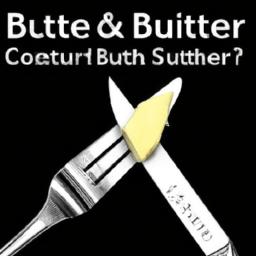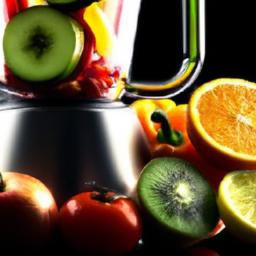Distinguishing Between Butter Knives and Dinner Knives: Key Differences Explained
When you glance across a formal dinner setting, your eye might catch two knives that look quite similar at first: the butter knife and the dinner knife. Though they share a place on the table, these utensils serve distinct purposes. One excels in smooth spreading, while the other is designed for precise cutting. Understanding their differences can elevate both your dining etiquette and mealtime ease.
Butter Knife vs Dinner Knife: Understanding Their Unique Roles
At a surface level, the butter knife and dinner knife appear as closely related tools. Yet, their designs tell a very different story. The butter knife sports a blunt, rounded tip paired with a wide, flat blade-perfect for gently scooping and spreading soft foods such as butter, cream cheese, or jam without damaging delicate bread. In contrast, the dinner knife features a sharper edge, often serrated, with a longer blade suited for slicing cooked meats, firm vegetables, and anything that demands a bit more cutting power.
| Characteristic | Butter Knife | Dinner Knife |
|---|---|---|
| Blade Edge | Blunt, smooth | Sharp or serrated |
| Blade Tip | Rounded | Pointed or slightly rounded |
| Primary Function | Spreading soft items | Cutting firmer food |
| Blade Length | Shorter | Longer |
Think of the butter knife as a gentle facilitator, managing soft spreads without disruption, while the dinner knife is your culinary muscle, engineered to slice through proteins and veggies effortlessly.
Why Butter Knives Are the Ideal Spreading Tools
Ever struggled to smooth butter onto toast with a dinner knife? It can be tricky and messy. Butter knives are crafted specifically to glide over bread or crackers, distributing spreads evenly. Several design features make them perfect for this task:
- Wide, flat blade: Ensures broad coverage for smooth spreading.
- Rounded, blunt edge: Prevents tearing or cutting into delicate bread surfaces.
- Short blade length: Offers better control during spreading.
- Ergonomic handle: Provides a comfortable grip for smooth motions.
This thoughtful design means your breakfast doesn’t end in crumbs or ragged bread edges-something a similarly ill-suited shovel shape wouldn’t accomplish!
| Feature | Butter Knife | Dinner Knife |
|---|---|---|
| Blade Edge | Rounded, blunt | Sharp, pointed |
| Blade Width | Wide and flat | Narrow and tapered |
| Function | Spreading soft foods | Cutting firmer foods |
| Handle | Lightweight, easy to control | Heavier, designed for leverage |
The Cutting Edge: Dinner Knives and Their Practical Strengths
While dinner knives might seem unassuming, their construction is quite strategic. Equipped with either a straight sharp edge or a finely serrated blade, they are designed to effortlessly portion meats and firm vegetables. The serrations act like tiny teeth, gripping the food and working as a mini saw to prevent food from being crushed or torn apart.
They also often feature a robust handle, sometimes ergonomically molded, to give you maximum control.
- Sharpness for effortless slicing
- Serrated edges for enhanced grip on tougher cuts
- Comfort-focused handle design for firm control
| Feature | Importance | Additional Note |
|---|---|---|
| Serrated Edge | Ensures clean cutting of meats | Can function as a mini handheld saw if needed |
| Blade Length | Optimal for balanced slicing | Long enough for large portions without loss of control |
| Ergonomic Handle | Improves grip and reduces fatigue | Designed with practicality over aesthetics |
Trying to use a butter knife in place of a dinner knife to cut through steak is a recipe for culinary frustration-you’ll quickly find it ineffective and cumbersome.
Are Versatile Knives a Solution for Both Spreading and Cutting?
Could one knife do both jobs well? Not quite. Butter knives are optimized for spreading soft substances; they lack the edge required to cut through tougher foods. On the flip side, dinner knives, with their sharper serrations and pointed tips, handle cutting tasks efficiently but falter when spreading softly textured items smoothly.
| Knife Type | Ideal Use | Limitations |
|---|---|---|
| Butter Knife | Spreading butter, soft cheeses | Poor for cutting meat or crusty bread |
| Dinner Knife | Cutting cooked meats and firmer foods | Not optimal for smooth spreading, may tear bread |
For best results and overall dining satisfaction, using the right knife for its intended function is recommended.
Table Settings: Choosing the Right Knife for Each Course
Selecting appropriate knives for your meal isn’t just about aesthetics-it can enhance both functionality and guest impression. Butter knives are typically shorter and blunt, focusing on the delicate task of spreading. Dinner knives are longer and sharper to manage a wide range of foods present during main courses.
| Knife Type | Primary Purpose | Blade Design |
|---|---|---|
| Butter Knife | Applying butter, soft spreads to bread | Rounded, blunt edge |
| Dinner Knife | Slicing meats, vegetables, or firm foods | Serrated or smooth sharp edge |
Ensuring the correct knife is at hand allows guests to enjoy meals without fumbling-and keeps your table setting polished and sophisticated.
How Knife Design Influences Your Dining Experience
More than looks, the shape and sharpness of a knife dictate how comfortably and effectively you eat. Butter knives with their rounded tips encourage slow, careful spreading, perfect for soft toppings. Dinner knives, contrastingly, invite decisive cutting motions thanks to their pointed edges and serrations.
| Knife Type | Shape Characteristics | Ideal for | Dining Impact |
|---|---|---|---|
| Butter Knife | Blunt edge, rounded tip | Spreading butter, jams | Gentle spreading, no risk of cutting bread |
| Dinner Knife | Sharp or serrated edge, pointed tip | Slicing meats, vegetables | Precise and efficient cutting |
- Comfort: Appropriate shapes reduce hand fatigue.
- Precision: Right design ensures clean spreads or cuts.
- Meal Flow: Smooth use of knives enhances dining pleasure.
Knife Materials: Why Matter and What to Choose
The construction material of your knife deeply influences both its durability and performance. Butter knives often use softer metals or plastics suitable for gentle spreading without damaging surfaces. Dinner knives usually incorporate stainless steel, known for its hardness, sharpness, and corrosion resistance, making them ideal for cutting tasks.
| Knife Type | Common Material | Why It Matters |
|---|---|---|
| Butter Knife | Soft steel or plastic | Flexible and gentle for spreading without damaging bread |
| Dinner Knife | Stainless steel | Durable and sharp, capable of slicing tougher foods |
By understanding these material distinctions, you can maintain optimal knife performance and elevate your dining experience to a gourmet level.
Practical Tips to Maximize Your Butter and Dinner Knife Use
Proper use and care of both butter and dinner knives take your dining to the next level:
Butter Knife Tips
- Clean and dry immediately to prevent rust on softer metals.
- Use the flat, broad side to spread evenly and the rounded tip to scoop just the right amount.
Dinner Knife Tips
- Keep your dinner knives sharp for efficient and safe cutting.
- Hold the knife confidently but gently to maintain control without overpowering the cut.
| Knife Type | Primary Use | Care Advice |
|---|---|---|
| Butter Knife | Spreading soft toppings | Gentle washing and quick drying |
| Dinner Knife | Cutting meats and firm foods | Frequent sharpening and safe storage |
Using each knife as intended minimizes frustration and elevates your dining enjoyment.
Frequently Asked Questions About Butter and Dinner Knives
- Q: What distinguishes a butter knife?
- A: Butter knives are shorter, with dull, rounded blades designed for spreading soft foods like butter and jam rather than cutting.
- Q: What is a dinner knife’s main function?
- A: Dinner knives are longer, with sharper, sometimes serrated edges, tailored for slicing meats and firmer vegetables.
- Q: Can I cut steak with a butter knife?
- A: It’s not practical; butter knives lack the sharpness needed, making cutting difficult and awkward.
- Q: Is it okay to use a dinner knife to spread butter?
- A: While possible, dinner knives may tear bread or clump butter, making butter knives a better choice for spreading.
- Q: How to recognize butter and dinner knives at the table?
- A: Butter knives have short, broad, rounded, blunt blades; dinner knives are longer, pointed, and sharper.
- Q: Why choose the right knife?
- A: It reduces dining frustration and enhances elegance. A proper knife makes your meal more enjoyable.
Final Thoughts: Embrace the Right Knife for Every Meal
The subtle differences between butter and dinner knives hold great significance in creating a seamless dining experience. Using a butter knife for spreading ensures your bread stays intact and your spreads look appealing, while a dinner knife’s sharpness guarantees effortless slicing of your entrée.
| Knife Type | Best Uses | Distinctive Feature |
|---|---|---|
| Butter Knife | Spreading butter, soft cheeses, jams | Blunt, rounded blade edge |
| Dinner Knife | Slicing meat, firm vegetables | Sharp or serrated edge with pointed tip |
By keeping these guidelines in mind, you’ll not only enhance your meal’s taste but also the overall dining atmosphere-small details making a big impact toward gourmet refinement.




